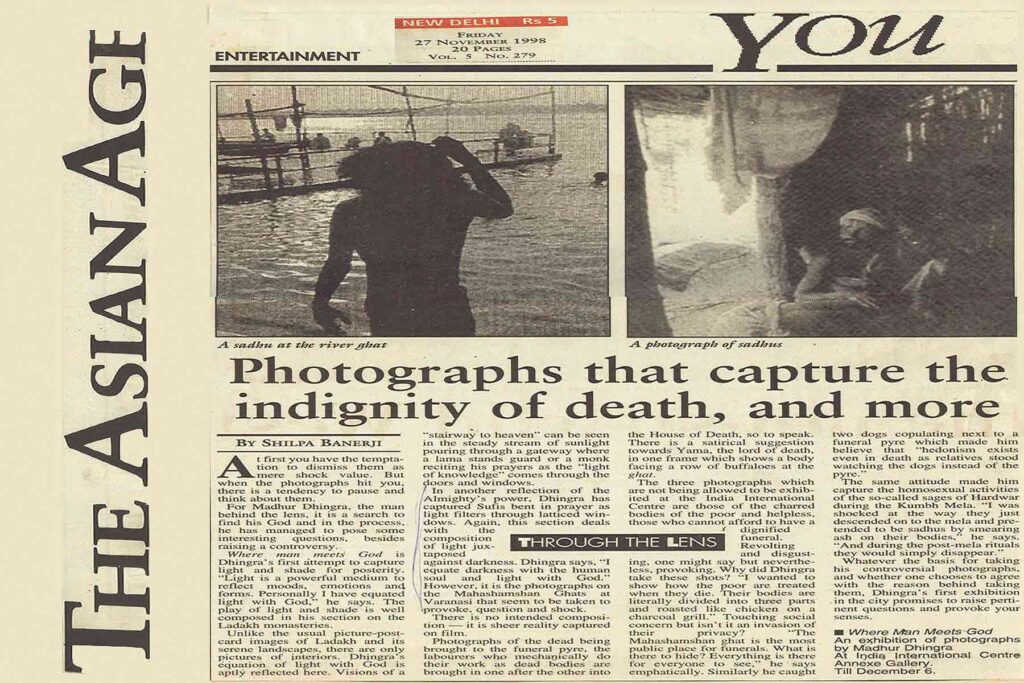THE ASIAN AGE : FRIDAY 27 NOVEMBER 1998
Photographs That Capture The Indignity Of Death, And More | Shilpa Banerji:
At first you have the temptation to dismiss them as mere shock value. But when the photographs hit you, there is a tendency to pause and think about them.
For Madhur Dhingra, the man behind the lens, it is a search to find his God and in the process, he has managed to pose some interesting question, besides raising a controversy.
Where man meets God is Dhingra’s first attempt to capture light and shade for posterity. “Light is a powerful medium to reflect moods, emotions and forms. Personally I have equated light with God,” he says. The play of light and shade is well composed in his section on the Ladakh monasteries.
Unlike the usual picture-post-card images of Ladakh and its serene landscapes, there are only pictures of interiors. Dhingra’s equation of light with God is aptly reflected here. Visions of a “stairway to heaven” can be seen in the steady stream of sunlight pouring though a gateway where a lama stands guard or a monk reciting his prayers as the “light of knowledge” comes through the doors and windows.
In another reflection of the Almighty’s power, Dhingra has captured Sufis bent in prayer as light filters through latticed windows. Again, this section deals with the composition of light juxtaposed against darkness. Dhingra says, “I equate darkness with the human soul and light with God.” However, it is the photographs on the Mahashamshan Ghats at Varanasi that seem to be taken to provoke, question and shock.
There is no intended composition – it is sheer reality captured on film.
Photographs of the dead being brought to the funeral pyre, the laborers who mechanically do their work as dead bodies are brought in one after the other into the House of Death, so to speak. There is a satirical suggestion towards Yama, the lord of death, in one frame which shows a body facing a row of buffaloes at the ghat.
The three photographs which are not being allowed to be exhibited at the India International Centre are those of the charred bodies of the poor and helpless, those who cannot afford to have a dignified funeral. Revolting and disgusting, one might say but nevertheless, provoking. Why did Dhingra take these shots? “I wanted to show how the poor are treated when they die. Their bodies are literally divided into three parts and roasted like chicken on a charcoal grill.” Touching social concern but isn’t it an invasion of their privacy? “The Mahashamshan ghat is the most public place for funerals. What is there to hide? Everything is there for everyone to see,” he says emphatically. Similarly he caught two dogs copulating next to a funeral pyre which made him believe that “hedonism exists even in death as relatives stood watching the dogs instead of the pyre.”
The same attitude made him capture the homosexual activities of the so-called sages of Hardwar during the Kumbh Mela. “I was shocked at the way they just descended on to the mela and pretended to be sadhus by smearing ash on their bodies,” he says. “And during the post-mela rituals they would simply disappear.”
Whatever the basis of taking his controversial photographs, and whether one chooses to agree with the reason behind taking them, Dhingra’s first exhibition in the city promises to raise pertinent question and provoke your senses.
